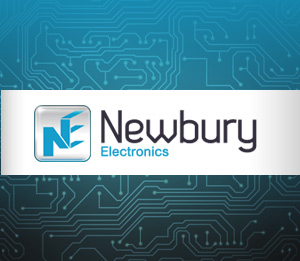
The Future of Electronic Design | Newbury Electronics Blog
Component technology is the foundation of all electronics. Advances are followed closely by enhanced software and improved human interfaces like displays, keyboards, and audio devices.
Hardware
The Intel 4004 microprocessor had an astounding 2250 transistors when it was first introduced. By comparison, a modern multi-core processor has billions. The pace of electronic development has been rapid, and there's no reason to presume it will slow.
Electronic components and printed circuit boards were once plotted out on paper, but with the advent of electronic design automation, sometimes referred to as electronic computer assisted design or ECAD, designs became far more complex and enjoyed greater reliability. They could be virtually tested before being etched in silicon.
Nanotechnology aims to further reduce the size of internal components of integrated circuits, increasing complexity and density. The practical limit for miniaturization using current technology is the wavelengths of light that etch the circuits. The next step is to develop single molecule electronics using individual molecules as electronic parts. To appreciate the size of these parts, it's instructive to know that the addition of a single electron to the gate of a molecular transistor is sufficient to turn it on or off.
The human interface
A decade ago, a Canadian telecommunications company pioneered a wearable computer for their field service technicians. It was a vest that contained a small computer and hard drive with a fold-out screen and keyboard. It used a cellular phone to connect to the company's help desk, and the whole thing was powered by heavy nicad batteries. These days, it would be replaced with a simple tablet computer.
The advent of cloud computing allows users to seamlessly integrate data and programs across multiple devices. It appears that the devices, tablets, netbooks, smart phones, and the like, are selected for one particular purpose rather than being generalized, multi-purpose machines. Someone who doesn't write often, for instance, wouldn't choose a netbook and would prefer a handy smart phone or tablet for access to web content.
Some gee-whiz devices offer much potential. Eyeglasses that incorporate video displays or digital cameras are one such idea. Much like the heads-up-display in an aircraft, the wearer could stream information right in front of his eyes.
Cellular phones and cameras with GPS receivers are already available. Location information can be used for good purposes, like finding the location of an accident, but it can also be misused. New technology brings up new challenges to our ideas of convenience, safety, and privacy, and the uses are still evolving.
Connectivity
For a generation overjoyed at playing Pong on their television sets, the first experience of a 300 baud telephone connection to a bulletin board was monumental. That's 300 symbols per second! At that rate, loading a modern web page would take an agonizingly long time, and people would be in the streets with torches and pitchforks in protest.
Just as rural electrification brought new business and industry to farm country, so too will increasing internet connectivity bring a similar change. The introduction of more robust electronic devices coupled with better connectivity will allow people to work and play in ways we cannot yet imagine.

